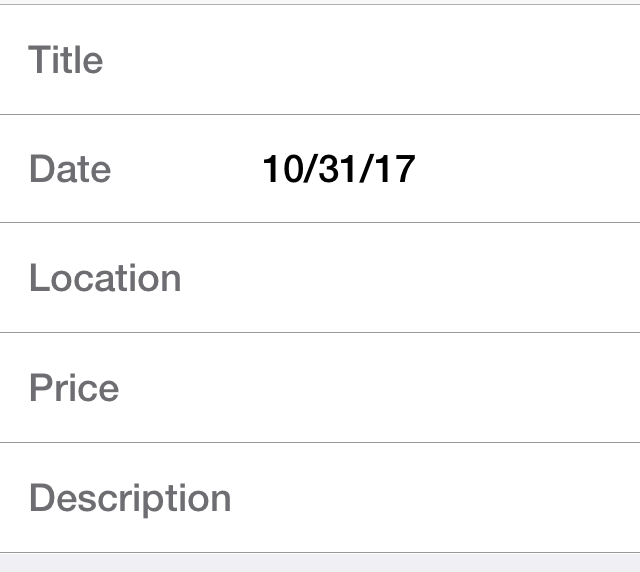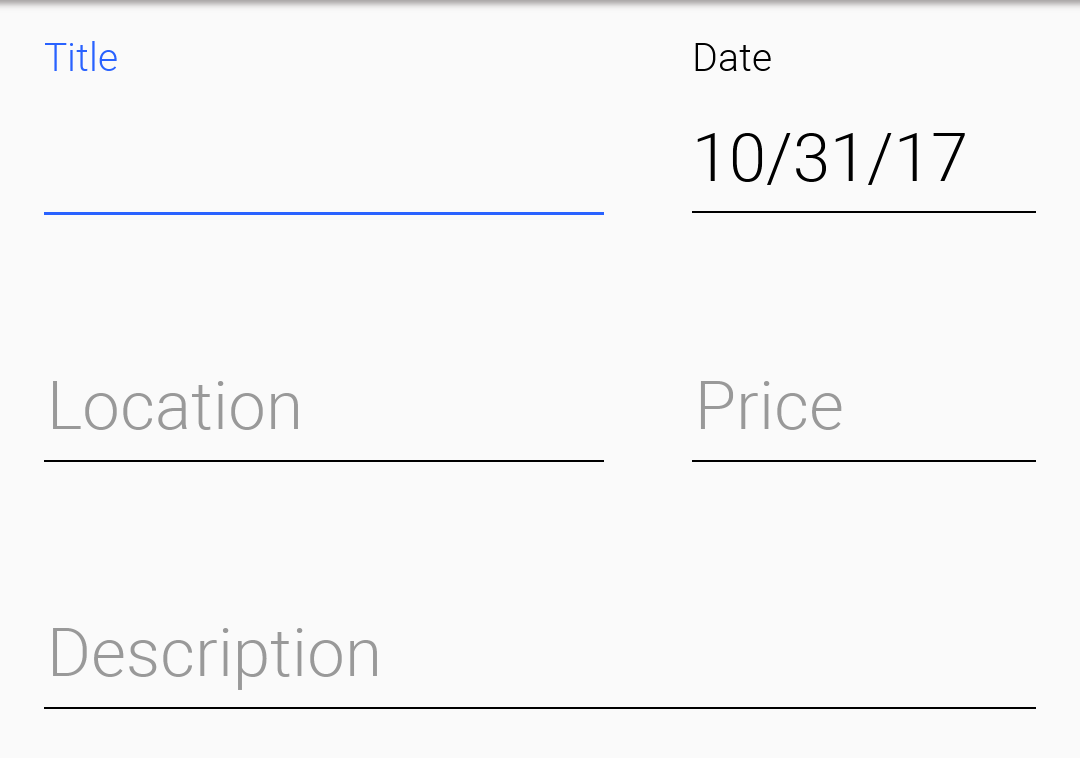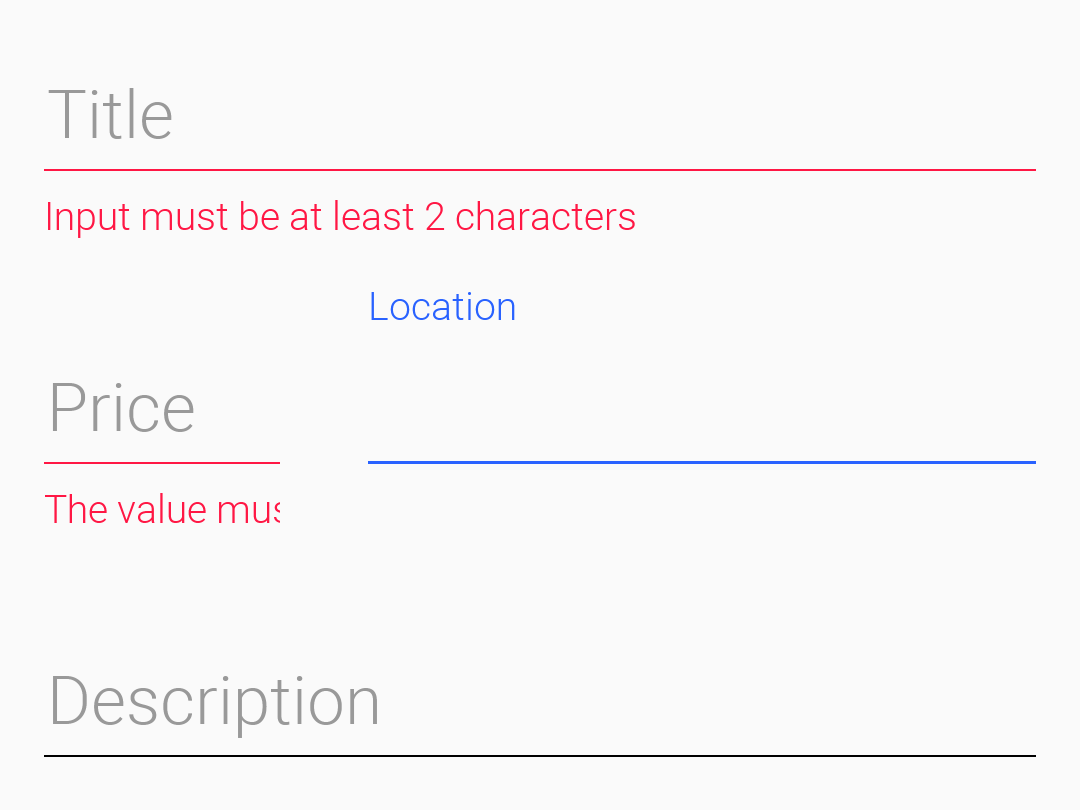
com.codename1.ui.layouts.TextModeLayout Maven / Gradle / Ivy
/*
* Copyright (c) 2012, Codename One and/or its affiliates. All rights reserved.
* DO NOT ALTER OR REMOVE COPYRIGHT NOTICES OR THIS FILE HEADER.
* This code is free software; you can redistribute it and/or modify it
* under the terms of the GNU General Public License version 2 only, as
* published by the Free Software Foundation. Codename One designates this
* particular file as subject to the "Classpath" exception as provided
* by Oracle in the LICENSE file that accompanied this code.
*
* This code is distributed in the hope that it will be useful, but WITHOUT
* ANY WARRANTY; without even the implied warranty of MERCHANTABILITY or
* FITNESS FOR A PARTICULAR PURPOSE. See the GNU General Public License
* version 2 for more details (a copy is included in the LICENSE file that
* accompanied this code).
*
* You should have received a copy of the GNU General Public License version
* 2 along with this work; if not, write to the Free Software Foundation,
* Inc., 51 Franklin St, Fifth Floor, Boston, MA 02110-1301 USA.
*
* Please contact Codename One through http://www.codenameone.com/ if you
* need additional information or have any questions.
*/
package com.codename1.ui.layouts;
import com.codename1.ui.Component;
import com.codename1.ui.Container;
import com.codename1.ui.InputComponent;
import com.codename1.ui.geom.Dimension;
import com.codename1.ui.plaf.UIManager;
import com.codename1.ui.table.TableLayout;
import java.util.ArrayList;
/**
* This is a special case layout specifically designed for {@link com.codename1.ui.InputComponent}.
* When the on top mode of text layout is used this layout acts exactly like a table layout and uses the
* given constraints. When this mode is false it uses a regular box Y layout mode and orders the elements one
* on top of the other.
* One important difference between this layout and the default table layout is that the vertical alignment
* here is set to {@code TOP} so the error label below doesn't break component alignment if two components
* are on the same row and only one has an error message.
*
*
* The following code demonstrates a simple set of inputs and validation as it appears in iOS, Android and with
* validation errors
*
*
*  *
*  *
*  *
*
* @author Shai Almog
*/
public class TextModeLayout extends Layout {
/**
* The underlying table layout can be used freely to create constraints on the fly
*/
public final TableLayout table;
private Layout actual;
/**
* Automatically invokes the {@link com.codename1.ui.InputComponent#group(com.codename1.ui.Component...)}
* method on the text components in a BoxY layout scenario
*/
private boolean autoGrouping = true;
private int lastComponentCount = 0;
/**
* The constructor works like the standard table layout constructor and will behave as such with the on
* top mode
* @param rows the number of rows
* @param columns the number of columns;
*/
public TextModeLayout(int rows, int columns) {
table = new TableLayout(rows, columns);
table.setGrowHorizontally(true);
if(!UIManager.getInstance().isThemeConstant("textComponentOnTopBool", false)) {
actual = BoxLayout.y();
} else {
actual = table;
}
}
/**
* {@inheritDoc}
*/
@Override
public void addLayoutComponent(Object value, Component comp, Container c) {
if(actual == table) {
// forcing default constraint to still be aligned top
if(!(value instanceof TableLayout.Constraint)) {
value = createConstraint();
}
table.addLayoutComponent(value, comp, c);
}
}
/**
* {@inheritDoc}
*/
@Override
public Object cloneConstraint(Object constraint) {
return actual.cloneConstraint(constraint);
}
/**
* {@inheritDoc}
*/
@Override
public Object getComponentConstraint(Component comp) {
return actual.getComponentConstraint(comp);
}
/**
* {@inheritDoc}
*/
@Override
public boolean isConstraintTracking() {
return actual.isConstraintTracking();
}
/**
* {@inheritDoc}
*/
@Override
public boolean isOverlapSupported() {
return actual.isOverlapSupported();
}
/**
* {@inheritDoc}
*/
@Override
public boolean obscuresPotential(Container parent) {
return actual.obscuresPotential(parent);
}
/**
* {@inheritDoc}
*/
@Override
public void removeLayoutComponent(Component comp) {
actual.removeLayoutComponent(comp);
}
/**
* {@inheritDoc}
*/
@Override
public void layoutContainer(Container parent) {
if(autoGrouping && actual != table && lastComponentCount != parent.getComponentCount()) {
lastComponentCount = parent.getComponentCount();
ArrayList
*
*
* @author Shai Almog
*/
public class TextModeLayout extends Layout {
/**
* The underlying table layout can be used freely to create constraints on the fly
*/
public final TableLayout table;
private Layout actual;
/**
* Automatically invokes the {@link com.codename1.ui.InputComponent#group(com.codename1.ui.Component...)}
* method on the text components in a BoxY layout scenario
*/
private boolean autoGrouping = true;
private int lastComponentCount = 0;
/**
* The constructor works like the standard table layout constructor and will behave as such with the on
* top mode
* @param rows the number of rows
* @param columns the number of columns;
*/
public TextModeLayout(int rows, int columns) {
table = new TableLayout(rows, columns);
table.setGrowHorizontally(true);
if(!UIManager.getInstance().isThemeConstant("textComponentOnTopBool", false)) {
actual = BoxLayout.y();
} else {
actual = table;
}
}
/**
* {@inheritDoc}
*/
@Override
public void addLayoutComponent(Object value, Component comp, Container c) {
if(actual == table) {
// forcing default constraint to still be aligned top
if(!(value instanceof TableLayout.Constraint)) {
value = createConstraint();
}
table.addLayoutComponent(value, comp, c);
}
}
/**
* {@inheritDoc}
*/
@Override
public Object cloneConstraint(Object constraint) {
return actual.cloneConstraint(constraint);
}
/**
* {@inheritDoc}
*/
@Override
public Object getComponentConstraint(Component comp) {
return actual.getComponentConstraint(comp);
}
/**
* {@inheritDoc}
*/
@Override
public boolean isConstraintTracking() {
return actual.isConstraintTracking();
}
/**
* {@inheritDoc}
*/
@Override
public boolean isOverlapSupported() {
return actual.isOverlapSupported();
}
/**
* {@inheritDoc}
*/
@Override
public boolean obscuresPotential(Container parent) {
return actual.obscuresPotential(parent);
}
/**
* {@inheritDoc}
*/
@Override
public void removeLayoutComponent(Component comp) {
actual.removeLayoutComponent(comp);
}
/**
* {@inheritDoc}
*/
@Override
public void layoutContainer(Container parent) {
if(autoGrouping && actual != table && lastComponentCount != parent.getComponentCount()) {
lastComponentCount = parent.getComponentCount();
ArrayList tc = new ArrayList();
for(Component c : parent) {
if(c instanceof InputComponent) {
tc.add(c);
}
}
if(tc.size() > 0) {
Component[] tcArr = new Component[tc.size()];
tc.toArray(tcArr);
InputComponent.group(tcArr);
}
}
actual.layoutContainer(parent);
}
/**
* {@inheritDoc}
*/
@Override
public Dimension getPreferredSize(Container parent) {
return actual.getPreferredSize(parent);
}
/**
* Creates a new Constraint instance to add to the layout
*
* @return the default constraint
*/
public TableLayout.Constraint createConstraint() {
return table.createConstraint().verticalAlign(Component.TOP);
}
/**
* Creates a new Constraint instance to add to the layout
*
* @return the default constraint
*/
public TableLayout.Constraint cc() {
return table.createConstraint().verticalAlign(Component.TOP);
}
/**
* Creates a new Constraint instance to add to the layout
*
* @param row the row for the table starting with 0
* @param column the column for the table starting with 0
* @return the new constraint
*/
public TableLayout.Constraint createConstraint(int row, int column) {
return table.createConstraint(row, column).verticalAlign(Component.TOP);
}
/**
* Creates a new Constraint instance to add to the layout
*
* @param row the row for the table starting with 0
* @param column the column for the table starting with 0
* @return the default constraint
*/
public TableLayout.Constraint cc(int row, int column) {
return table.createConstraint(row, column).verticalAlign(Component.TOP);
}
/**
* Automatically invokes the {@link com.codename1.ui.InputComponent#group(com.codename1.ui.Component...)}
* method on the text components in a BoxY layout scenario
* @return the autoGrouping
*/
public boolean isAutoGrouping() {
return autoGrouping;
}
/**
* Automatically invokes the {@link com.codename1.ui.InputComponent#group(com.codename1.ui.Component...)}
* method on the text components in a BoxY layout scenario
* @param autoGrouping the autoGrouping to set
*/
public void setAutoGrouping(boolean autoGrouping) {
this.autoGrouping = autoGrouping;
}
}